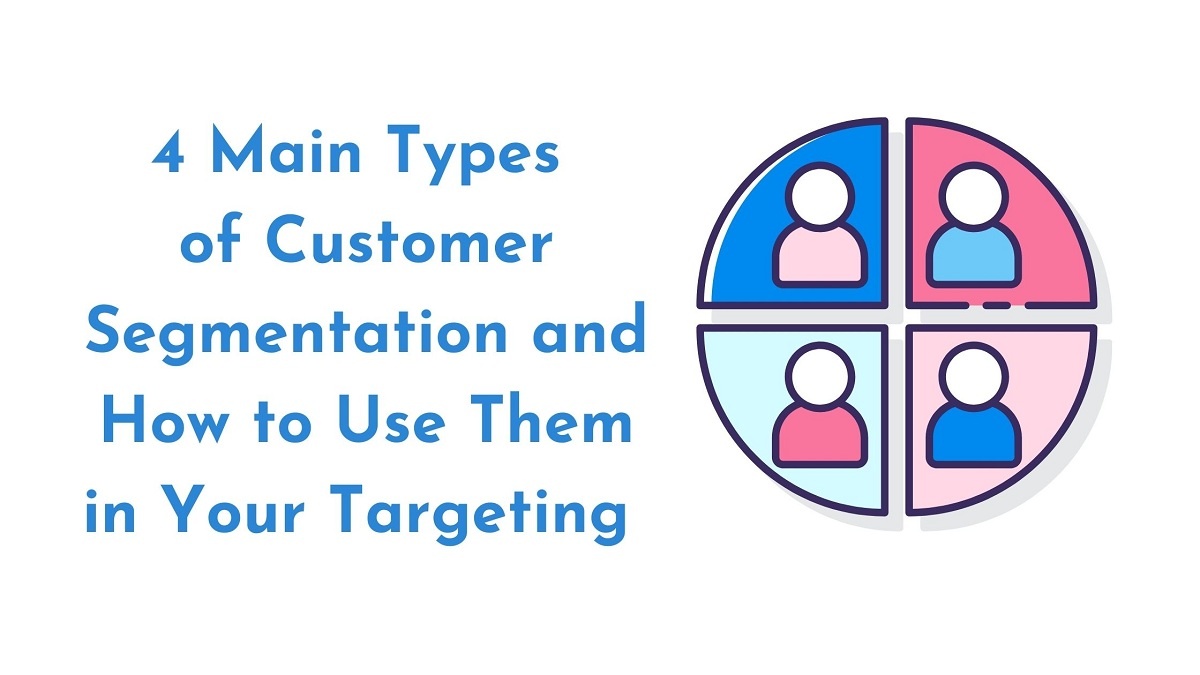What Is Needs-based Segmentation? And How to Use It in E-commerce?
If your business doesn’t meet the needs of your target customers, then you have no business. Hard truth but it’s true. Similarly, targeting too wide a customer base will result in a lot of wasted money.
That’s why customer segmentation is an essential part of your e-commerce marketing strategy. But one type of segmentation that’s rarely discussed is needs-based segmentation. Though it should be.
In the end, they fail to identify customers’ real needs, resulting in bad marketing tactics and vague ads, and possibly bad products.
Meanwhile, customers feel misunderstood and can neither relate to campaigns nor brands.
But is there a better way to understand customers’ needs and market to those needs? Absolutely! Businesses just have to reverse the process and start their journey from the customer’s point of view.
The best way to go about this is to use the needs-based segmentation approach.
Customer segmentation is a great start, but diving deeper into customer needs and pains can create new opportunities for your business.
In this article, we’ll define what customer segmentation and needs-based segmentation are. Then we’ll explore the benefits of needs-based segmentation and how to use it as an e-commerce business.
What is customer segmentation?
Customer segmentation is the process of dividing your customers into groups to get a better understanding of their needs, pains, and behaviors.
Using a customer segmentation strategy helps you identify some patterns in your customers’ purchasing behavior like how often they buy from you, their preferred products, where they engage with your brand, the average value of their carts, among other criteria.
Categorizing your customers helps you see the big picture and ensures laser-focused targeting in your marketing campaigns.
According to trustmary.com, 80% of content marketing is targeted at the wrong target audience. (Oops!)
A big chunk of marketing resources are wasted on inaccurate or even wrong targeting. At the same time, the customers feel irritated because they’re seeing irrelevant ads and products. The result? Customers mark your emails as spam and opt out of your newsletters, leave your social media pages, or ask their social platform to hide your ads!
Segmentation helps you avoid this mess and deliver the right message to the right person at the right time.
Using customer segmentation means an increase in both your conversion rate and retention rate.
The main 4 types of customer segmentation focus on demographics (customers’ age, gender, education, marital status, etc.), geography (location), behavior (buying patterns, certain preferences, and habits), and psychographics (interests, attitude, values, and personality).
A sub-segmentation method that dives deeper into all these factors and gives you a profound idea about your customer is needs-based segmentation.

What is needs-based segmentation?
Needs-based segmentation categorizes customers by their needs and pains. While it requires gathering more details about your customers, it helps you build a deeper relationship with them.
The needs-based segmentation approach divides customers into groups based on the benefits they seek when making a purchase.
Focusing on needs-based segmentation means exploring customers’ shared experience, motivations, and personal values.
Segmenting customers based on their needs will make it easier to tailor your marketing messages so that all your customers feel appreciated and understood.
Your customer needs may vary from one group to another. That’s why proper needs classification is important or your data will be confusing and unhelpful.
Needs-based segmentation also allows you to inspect the market closely and identify untapped and overlooked customer segments and needs.
It’s worth mentioning that needs-based segmentation shows you your customers’ needs across the customer journey.
Benefits of needs-based segmentation
Good products and spot-on resonate with people and entice them. Needs-based segmentation is about connecting with customers’ pain points.
Let’s explore the 5 benefits of needs-based segmentation in e-commerce and how it can increase your revenues and success.
1- Increases marketing effectiveness
Marketing is simply sending a message to your potential customers. That message should be delivered at the right time to the right customer so they can take action.
To ensure your message hits home, you must refine and customize it based on the needs of your customers.
This is where needs-based segmentation comes in. It helps business owners and marketing managers like you get a clearer picture about your audience so you can focus on a pain point instead of an imagined need or being too general.
2- Creates more satisfying experiences
Quality is important, no doubt. But customers also look at other aspects such as shape, packaging, and the overall experience with your business be it in-store, online, or via a mobile app.
For instance, some customers may prefer elegance, while others prefer simplicity, and a third group may opt for a crazy design that reflects their rebellious spirit.
Using needs-based segmentation data, e-commerce businesses can identify needs and translate these needs into changes in operations and experiences that will result in higher sales.
Knowing your customer’s specific needs and what entices them can help you in terms of packaging, for example, you can create sexier or more attractive packaging that entices them.
It’s all about needs and preferences.
3- Improves positioning and competitiveness
Identifying and meeting customer needs improves your market positioning.
While your competitors are wasting their time and efforts in ineffective strategies and creating marketing messages to a made-up audience rather than based on accurate data, You’ll be collecting relevant data that focuses on the needs and pains of real customers.
Using needs-based segmentation, online stores can uncover new opportunities such as untapped or ignored customer segments.
A further understanding of your customers’ needs, preferences, and behaviors can also help deliver better upselling and cross-selling opportunities.
4- Builds and increases customer loyalty
Businesses have a 60% to 70% better chance of selling a product to an existing customer. This probability shrinks to only 5% for new customers. (SEMRush)
Surprisingly, only 18% of companies focus more on customer retention compared to customer acquisition.

Therefore focusing on customer needs helps you deliver your products faster to customers, making you look like the problem-solver and accordingly boosting your customer retention.
And since loyal customers mean more sales and revenues for you, then you should have a good customer retention strategy in place.
5- Increases conversions
Running a campaign and generating too many leads doesn’t necessarily mean a successful campaign. Half of these leads may be customers who were curious but aren’t your target audience or in your target location.
On the other hand, using needs-based segmentation, your message reaches the right target audience, resulting in a higher number of quality leads.
How to do needs-based segmentation
Now that you know what needs-based segmentation is and how and why it works, let’s find out how to conduct it for your e-commerce store.
The process should follow a steady and organized approach to collect accurate and meaningful data and derive clear directions from it.
The first step in your needs-based approach is to define what a customer need is.
Know the 4 dimensions of needs
When customers want to buy a product, they unconsciously consider 4 dimensions:
- The characteristics of this product (is it big or small? Will it fit in the living room?...etc)
- Function (is it useful to them? Can this chair be used around the room or is it too heavy to carry)
- Feeling (Ex: How does this product make me feel? Do I like this color? Do I like this material? Does it compliment other furniture in the room?...etc)
- Value (Is this table affordable? Does it fall within my budget?)
Understanding the reason why people buy can go a long way into building customer relationships and solving customer pains.

Collect data
Start by collecting background quantitative data including demographics, location, behavior, and interests to understand needs better.
For the data to be useful, you need to ask the right questions.
If you’re using questionnaires or surveys, make sure your questions are clear and specific. Ask customers how they feel about your products? What about your delivery service? Or your variety in product offerings?
Analyze this data and segment customers based on that data. You can use Convertedin to segment customers, get a 360-degree view of your customers, and create automated ads for these audiences.
You can also use Convertedin to combine your scattered customer data and ensure you have clearer customer profiles.
Conclusion
Needs-based segmentation can take your marketing efforts and results to a whole new level. It can help you increase the efficiency of your marketing campaigns and generate a better return on ad spend (ROAS).
Using needs-based segmentation can translate into better experiences for your customers and accordingly higher retention and conversion rates.
But as you can see, it’s not simple. After all, if it were simple, everyone would be doing it.
Segmenting your customers based on their needs is a journey that ends with a considerate business and a loyal customer.
Need help unifying your customer data, segmenting customers, creating automated ads and more? Then check out Convertedin.
Convertedin is a one-stop marketing operating system for e-commerce businesses. We’ll help you segment customers, automated campaigns across multiple channels, support you in offering an omnichannel customer experience and more.
Check out Convertedin today!


